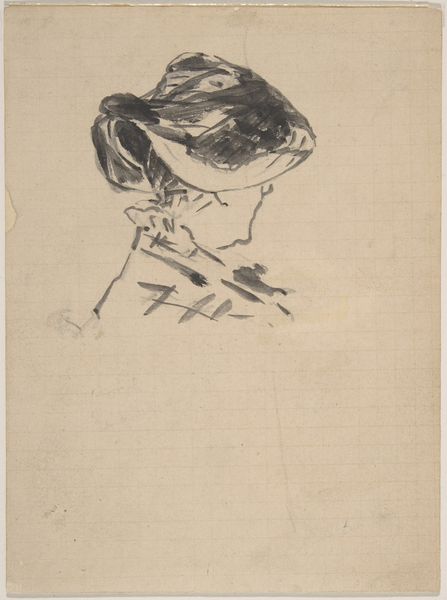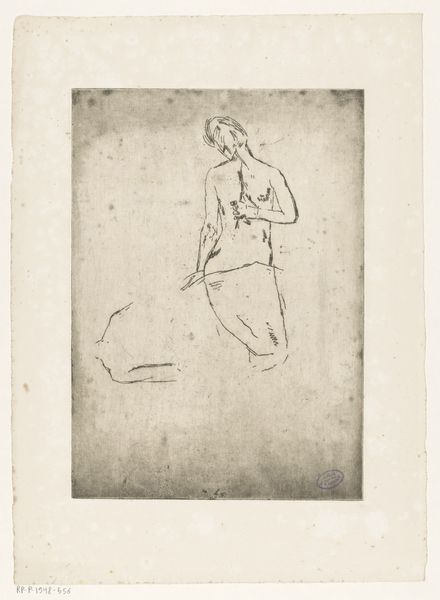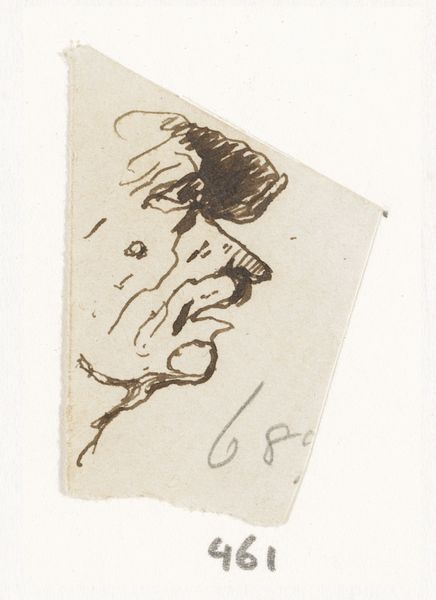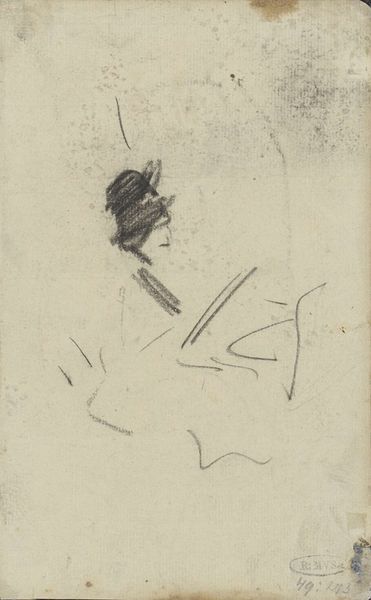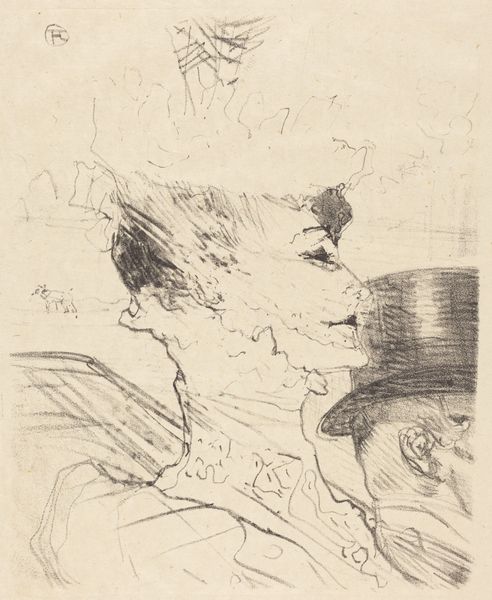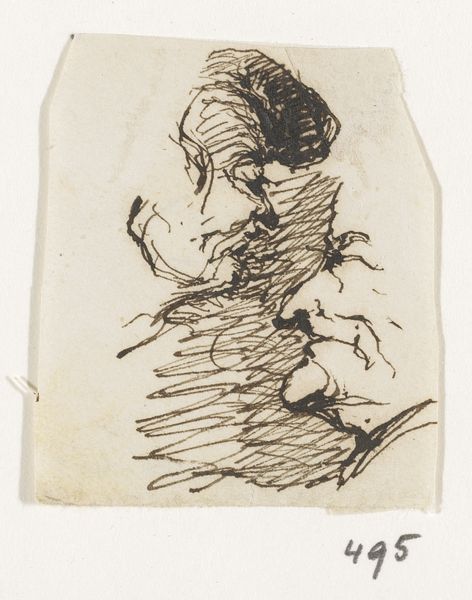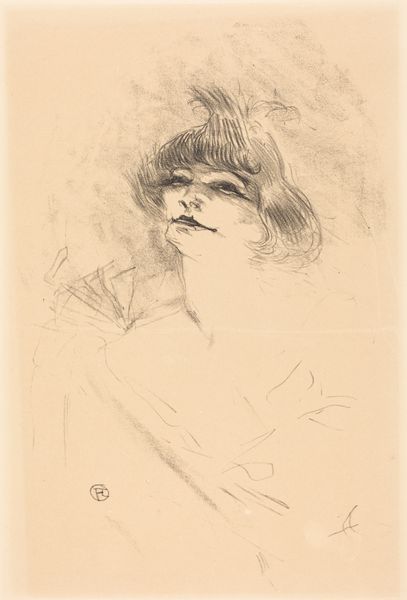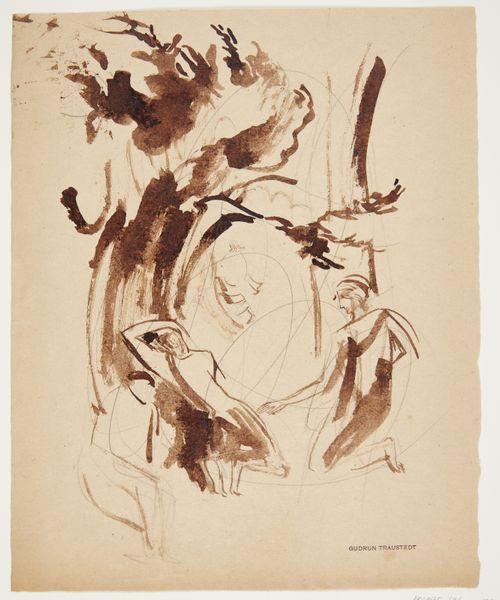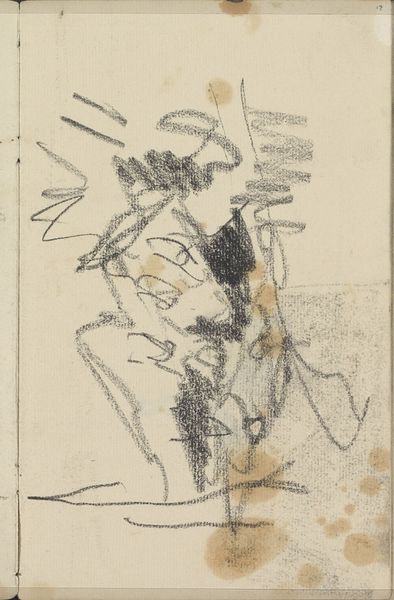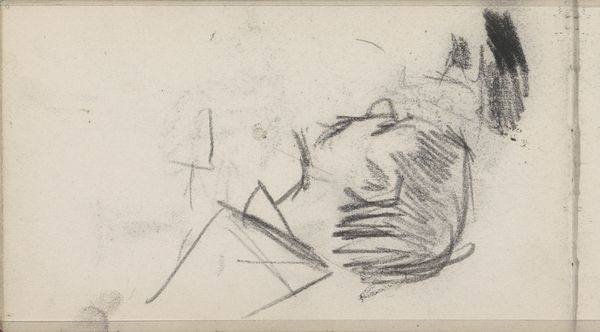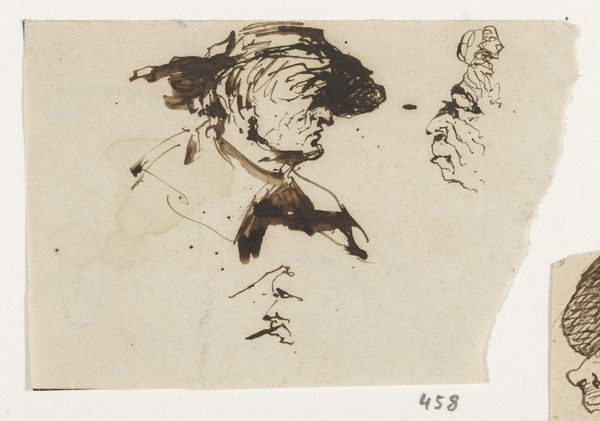
Head and Shoulders of a Young Woman in Profile I 1874 - 1884
0:00
0:00
drawing, print, etching
#
portrait
#
drawing
# print
#
etching
#
line
Dimensions: sheet: 12 7/8 x 9 13/16 in. (32.7 x 24.9 cm) plate: 3 3/16 x 2 13/16 in. (8.1 x 7.1 cm)
Copyright: Public Domain
Editor: We're looking at Degas' "Head and Shoulders of a Young Woman in Profile I," created between 1874 and 1884. It's an etching, so it’s lines on a plate. The crosshatching feels unfinished and a little…raw. What can you tell me about it? Curator: The rawness you perceive comes directly from Degas' engagement with the labor and the material itself. Etching allowed for a kind of immediacy and reproducibility, which challenged established artistic norms. Consider the copper plate itself: its surface, the pressure applied, the acid's bite. These processes reveal a social shift, making art accessible beyond the elite. Editor: So, the etching technique itself democratizes art-making? But how does the "unfinished" quality factor in? Curator: Precisely! It breaks away from the polished Salon style. Degas is exposing the labor of art, foregrounding process over perfect representation. Notice the diagonal lines: are they merely compositional? Or do they signify movement, perhaps even the pressures of the burgeoning industrial age? Think about how this would be viewed by his contemporary audiences. Editor: I guess the lines suggest both process and a certain nervous energy of modern life at that time. So it is art that looks very directly and closely at the material conditions and context in which it was made. Curator: Exactly! This etching urges us to reconsider the hierarchy between so-called ‘high art’ and craft, placing emphasis on production and materiality. Editor: I see that now. Thanks, I’ll definitely look at art of that period with new eyes from now on. Curator: And I will too. Paying attention to the conditions that brought these types of artwork into being helps to understand their place and relevance.
Comments
No comments
Be the first to comment and join the conversation on the ultimate creative platform.
